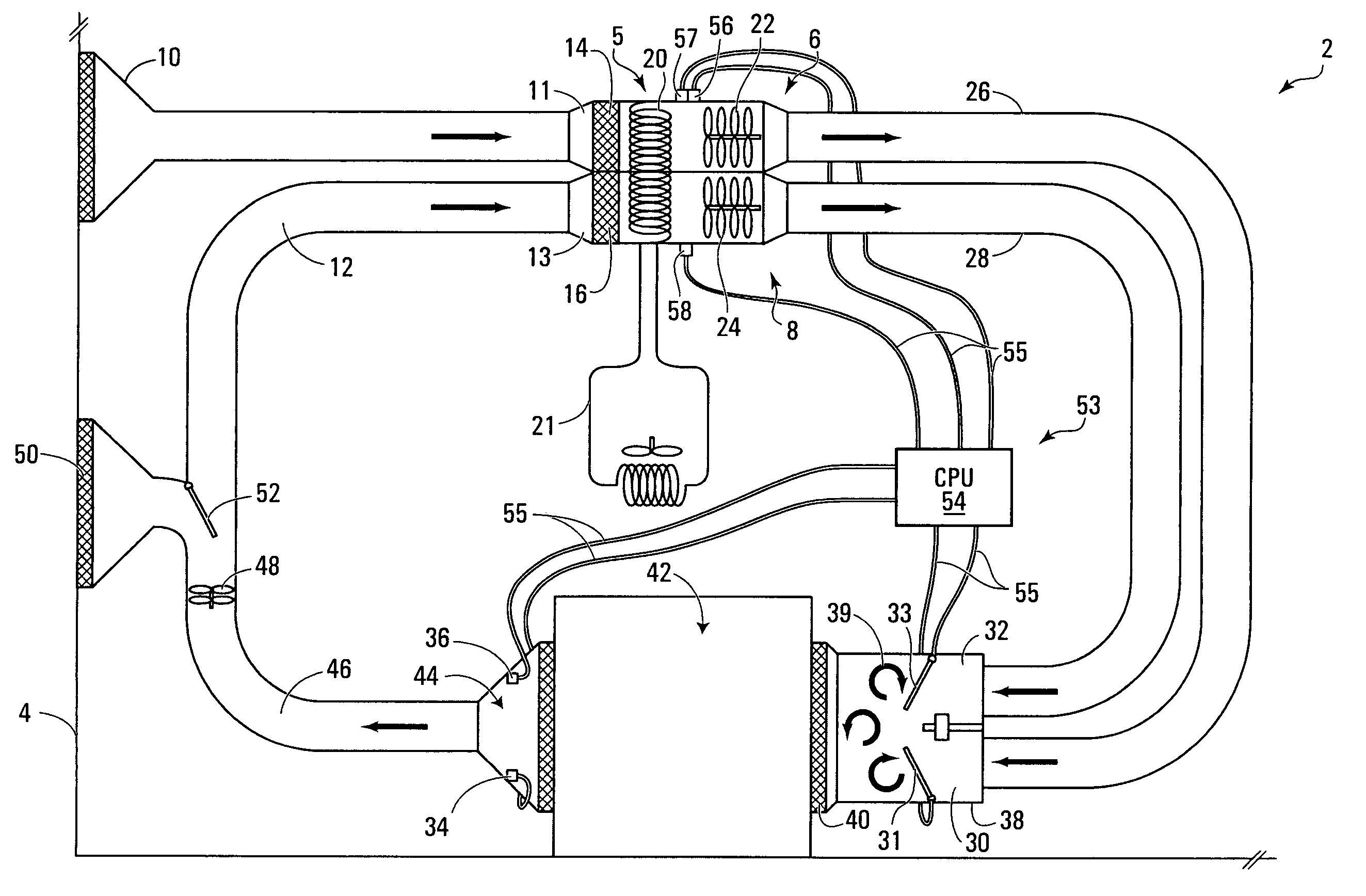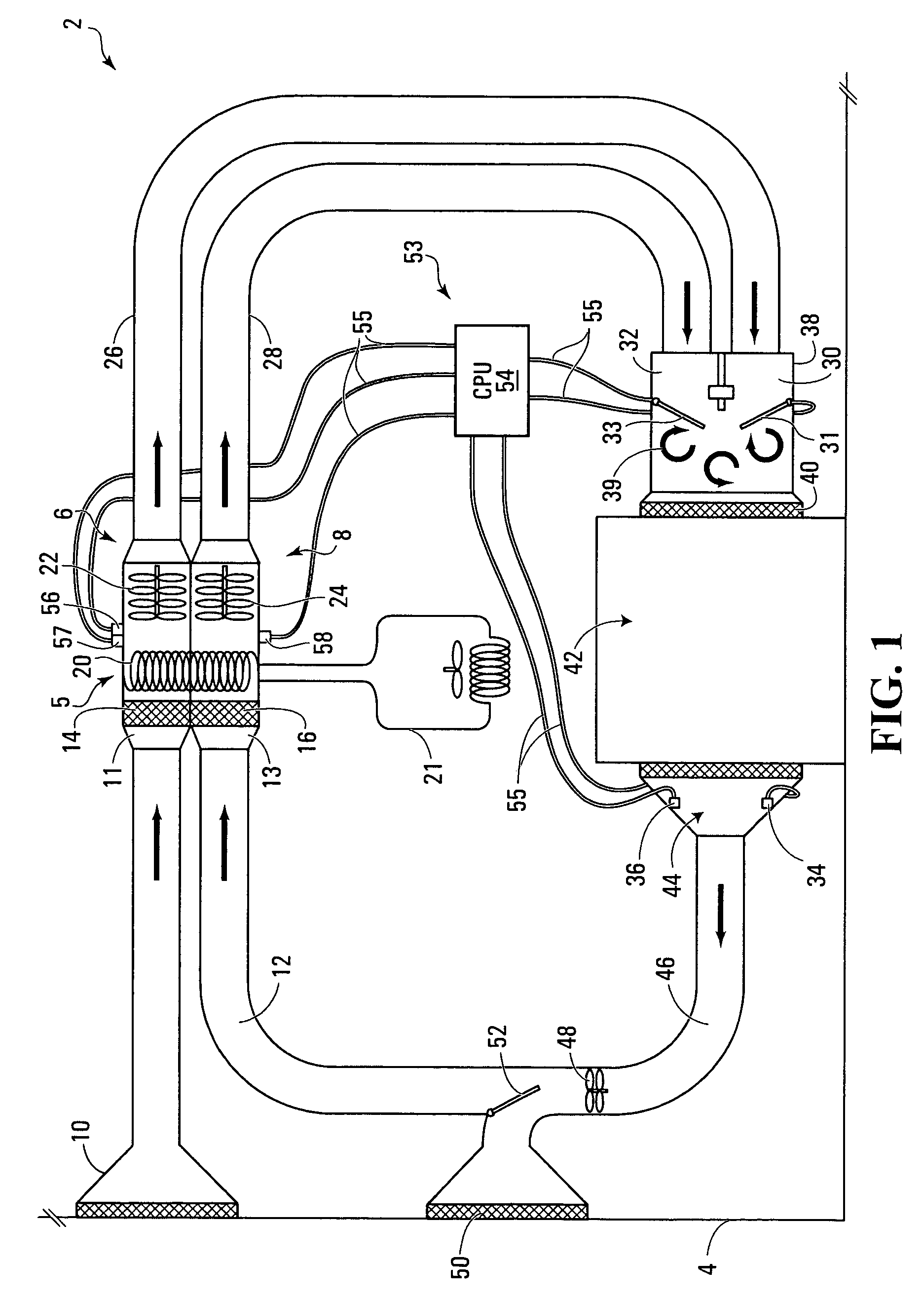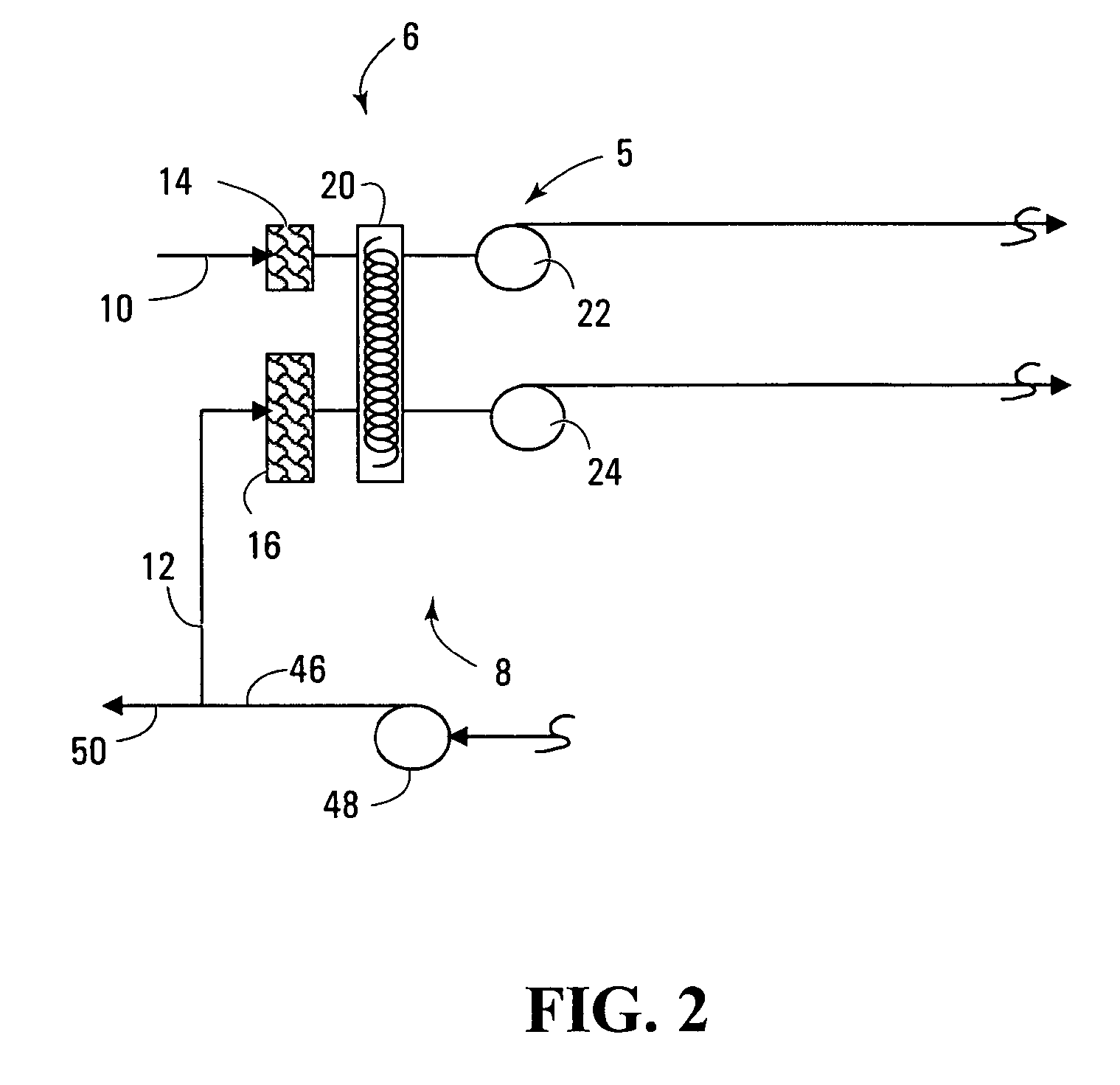Dual-compartment ventilation and air-conditioning system having a shared heating coil
a technology of ventilation and air conditioning system and heating coil, which is applied in the direction of space heating and ventilation control system, heating type, lighting and heating apparatus, etc., can solve the problems of deteriorating indoor air quality, high energy-penalty of cooling and dehumidification associated with ventilation in tropical context, and almost impossible to completely eliminate, so as to achieve optimal dehumidification performance and reduce floor area , the effect of optimal sensible cooling performan
- Summary
- Abstract
- Description
- Claims
- Application Information
AI Technical Summary
Benefits of technology
Problems solved by technology
Method used
Image
Examples
Embodiment Construction
[0026]Referring to FIG. 1, an HVAC system denoted generally by the reference numeral 2 for ventilating and conditioning the air in a building 4 has an air-handling unit (AHU) 5 which comprises two separate variable-air-volume (VAV) systems 6, 8. The first VAV system 6 draws in fresh air from outside through a fresh air intake 10. The fresh air intake 10 has a diffuser 11 which expands and slows the fresh air for maximal heat transfer. The fresh air is first filtered through a fresh air filter 14 and then cooled and dehumidified by a coil 20. The coil 20 is a heat-exchanging coil with a single feed of chilled water. A fresh air fan 22 moves the conditioned fresh air downstream through a fresh air duct 26 to a fresh air VAV box 30. The fresh air VAV box 30 is connected to a mixing box 38 into which the fresh air may flow. A fresh air damper 31 regulates the flow of conditioned fresh air into a mixing chamber 39 which is a portion of the mixing box 38.
[0027]The second VAV system 8 draw...
PUM
 Login to View More
Login to View More Abstract
Description
Claims
Application Information
 Login to View More
Login to View More - R&D
- Intellectual Property
- Life Sciences
- Materials
- Tech Scout
- Unparalleled Data Quality
- Higher Quality Content
- 60% Fewer Hallucinations
Browse by: Latest US Patents, China's latest patents, Technical Efficacy Thesaurus, Application Domain, Technology Topic, Popular Technical Reports.
© 2025 PatSnap. All rights reserved.Legal|Privacy policy|Modern Slavery Act Transparency Statement|Sitemap|About US| Contact US: help@patsnap.com



